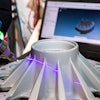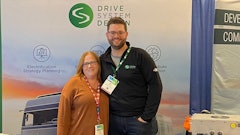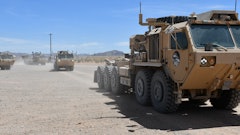Faced with premature weld failures in a line of skid steers, a manufacturer needed to act quickly to correct the problem.
At the very least, the weak spot meant product reliability and up-time were at stake. Plus, machines with the same potential for failure were still rolling off the production line. Two solutions were required: one that would correct the situation in the field, and another that would ensure it wouldn’t happen again in future pieces of equipment.
Due to an already high work load and the need to come up with a permanent solution quickly, management decided it was time to increase the size of its engineering department. With a phone call, they brought on an experienced team that would use its own tools to take a scientific approach for correcting and preventing the weld failures.
The OEM hired Pioneer Solutions, LLC, Cleveland, OH, a full-service, high-level independent engineering firm founded in 2004. At the company’s core is the former engineering department for Euclid-Hitachi Heavy Equipment, Inc., which had been reorganized as an independent business when the company closed its offices in Cleveland. The company’s heritage has made it a natural for work on large haul trucks, but it has applied its experience to many different sizes and applications of off-highway equipment.
Regardless of how large or small the OEM and its product development team is, there are times when hiring an independent engineering firm can help ensure a successful outcome. Using weld failure and analysis as the back drop, OEM Off-Highway talked with Pioneer Solutions’ Dave Kraninger, director of business development; Paul Pochatila, director of engineering; and Chris Althausen, manager of sales, about what the firm can add to a client’s project.
“Because many of us worked for an OEM for a long time, we still tend to think about the big picture when given a problem,” says Pochatila, who was part of the engineering department at Euclid. “We’re not just trying to solve the problem given to us, but want to ensure the solution doesn’t transfer the issue somewhere else.”
Wander through an equipment junkyard and you can see what correcting metal fatigue and weld failures often means for the end-user: add more steel to the problem area, by either welding over the original seam or tacking on a few scraps of steel.
At the product development level, when it comes to welded joints, “engineers are often more concerned about the strength of the actual weld, rather than the affect that weld’s existence might have on the component or machine” says Pochatila. “However, in a large structure there are very few welds that I would classify as a primary load-carrying joint. If the weld fails it is often because it’s in a higher stress area of the part,” in which case the part should be redesigned or the weld moved.
Adding more steel isn’t always the answer, either. Sometimes removing metal will do the trick, allowing the part to flex.
Kraninger says: “the depth we bring to something such as weld analysis comes from our experience in working on everything from a wheel loader bucket to aerial lift booms on up to a mining truck’s frame.”
Weld inspection
Hired to solve failures that were occurring in a skid steer’s lift arm, Pioneer Solutions started by getting to know the machine and its working conditions.
“First and foremost, we want to really understand the requirements placed on the machine,” says Kraninger. Pioneer Solutions bids projects on a fixed price and timeline; understanding what is expected is crucial early on. Plus, the information gathering phase—where the team looks at everything from cylinder pressures to the type of job where the failure rates are highest—forms the foundation on which the solution will be built.
“We always want to start working with the existing product, to know its operational parameters and limitations, how it is expected to be operated, and how it is actually used in real-life scenarios,” says Pochatila. “We need to understand all of that up front to put it into perspective with the failures that are occurring.”
From there, the project moves into analytical and technical methods. The skid steer’s operational conditions are condensed into smaller, more manageable events, and from that a digital model of the machine is developed.
“We created a relatively simple but comprehensive multi-body dynamic model of the skid steer, then ran it through several operational events and conditions to generate the load on the structure,” says Althausen. “Once we had those loads, we were able to move them into finite element modeling, analyze the structures, and basically put a condition on the failure.” With that information they can determine the events that aggravated or caused the component to break.
Based upon the first steps of understanding the machine and application, analytical load sets are developed for the operational events.
Consider a skid steer with its bucket lowered, driving into a pile of rocks at high speed: When the corner of the bucket hits something immoveable, like a curb, that twisting impact ripples through structure.
“We need to define the forces of those events,” says Althausen. “We use a multi-body dynamic model to simulate different operational events. It calculates multiple load sets with the magnitudes and directions of forces at different points on various components of the machine.”
In a finite element model, they reproduce the stresses and deflections in the virtual environment until conditions create a failure at a certain location. “We’re looking for stress magnitudes, directions and patterns in order to identify which operational events influenced the failure. This process correlates the machine’s failure in the real world to high stresses and failures in the analytic world,” says Althausen.
At this stage, Pioneer Solutions is working toward fixing the problem, and also establishing a way to verify the solution they develop. At the completion of the project, being able to prove the solution is correct is crucial for both parties.
“Once you are able to isolate the load condition, then you can do a lot with models,” says Pochatila. “If we see it is a localized issue around the weld, we can model different components and run multiple iterations. The key is to do it quickly in order to find which changes will work. Once we have what we feel is the best solution in that sub-model, we will go back and apply it to the larger model.
“If it’s not a localized problem, we want to identify that quickly with the models. We may have to change the structure more radically than what we thought. That is why we like to start with an existing unit, to establish a baseline as soon as possible.”
Developing a solution
After developing a baseline for the real-life problem in the analytical realm, the engineers at Pioneer Solutions start working on improving the design. “We can look at redesigning the structure and moving welds,” says Althausen. “We can make a series of different changes and then run the new designs through the same operational events we used to duplicate the problem and compare the results.”
Typically, Pioneer Solutions’ first approach to solving a weld problem is to move it out of a high-stress location. “Our second approach is often to alter the design of the structure,” says Althausen. “We will look to see if we can redesign it or add more rigidity to the structure in order to bring the stresses into acceptable ranges.”
When all else fails, Pioneer Solutions will look at the welding process itself. “That’s not where we want to find the problem, but it can come down to that,” he says.
An independent engineering firm such as Pioneer Solutions can provide an experienced third pair of eyes, helping the OEM’s team arrive at the appropriate answer to a single problem all the way up to a clean-sheet, new-product development program.
They can also help keep an OEM on-track. “We are disciplined and sometimes end up pushing to get things completed on the OEM’s end,” says Kraninger. “We have made a commitment to complete the project on time, and we want to ensure they are successful with it.”








